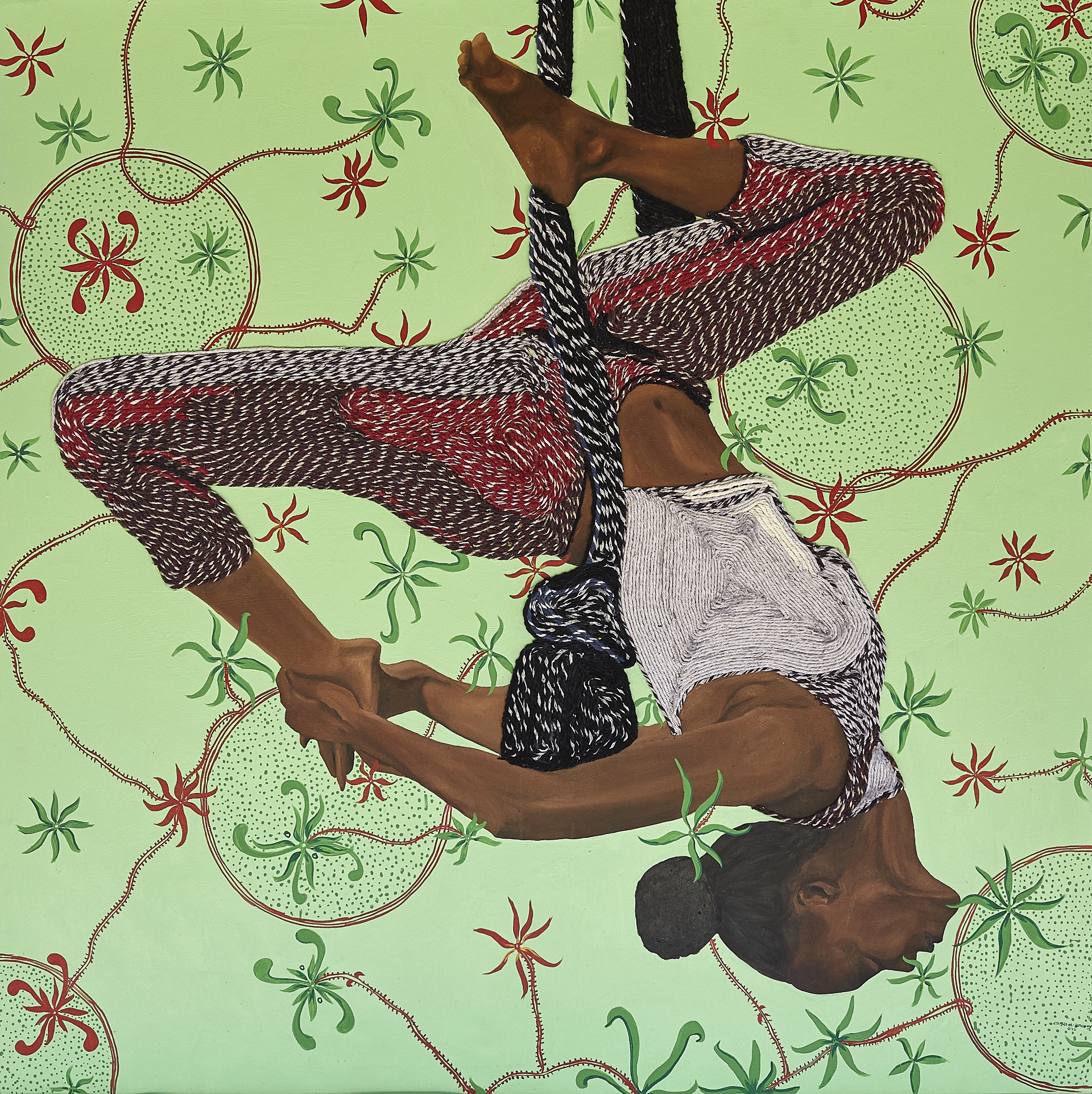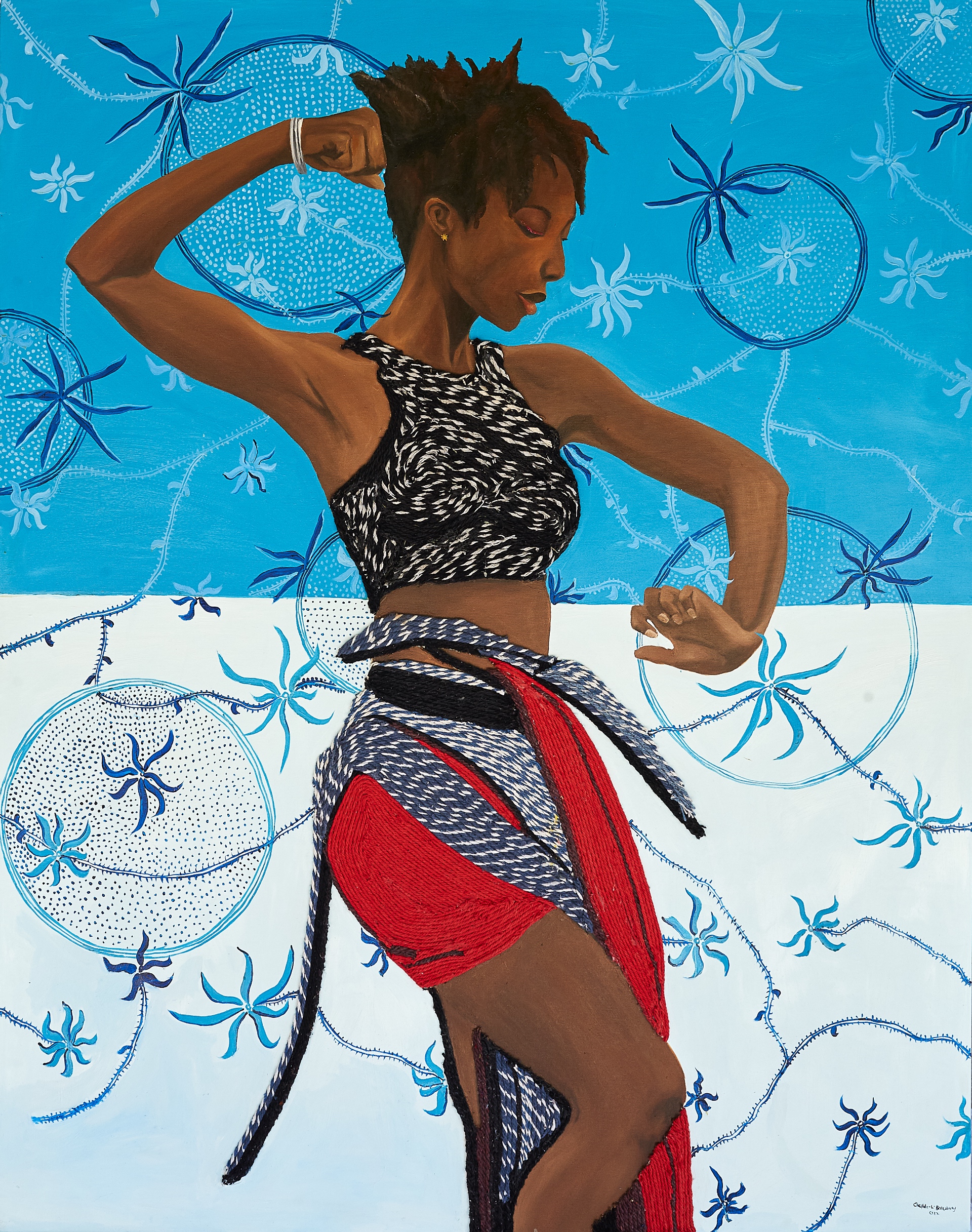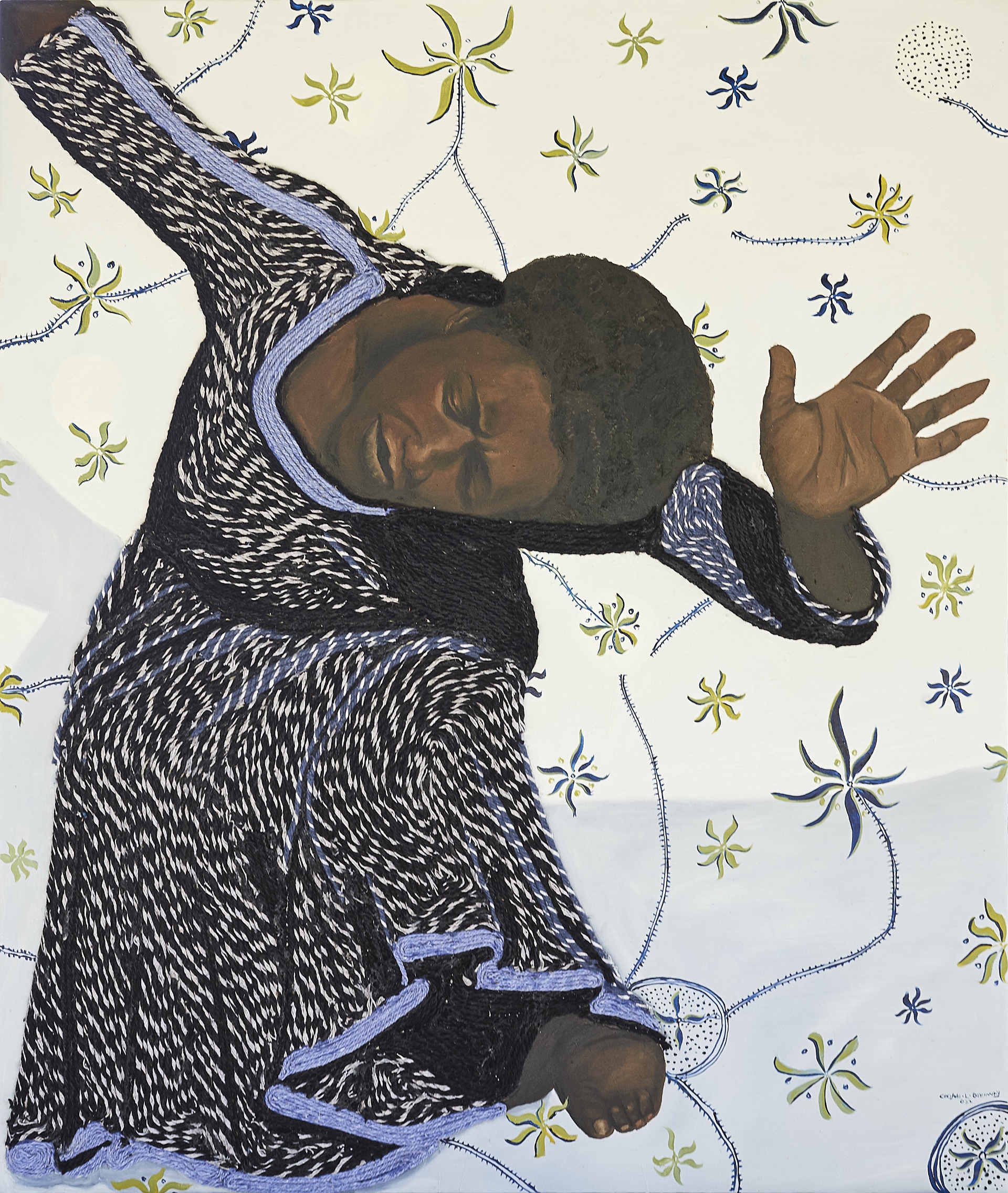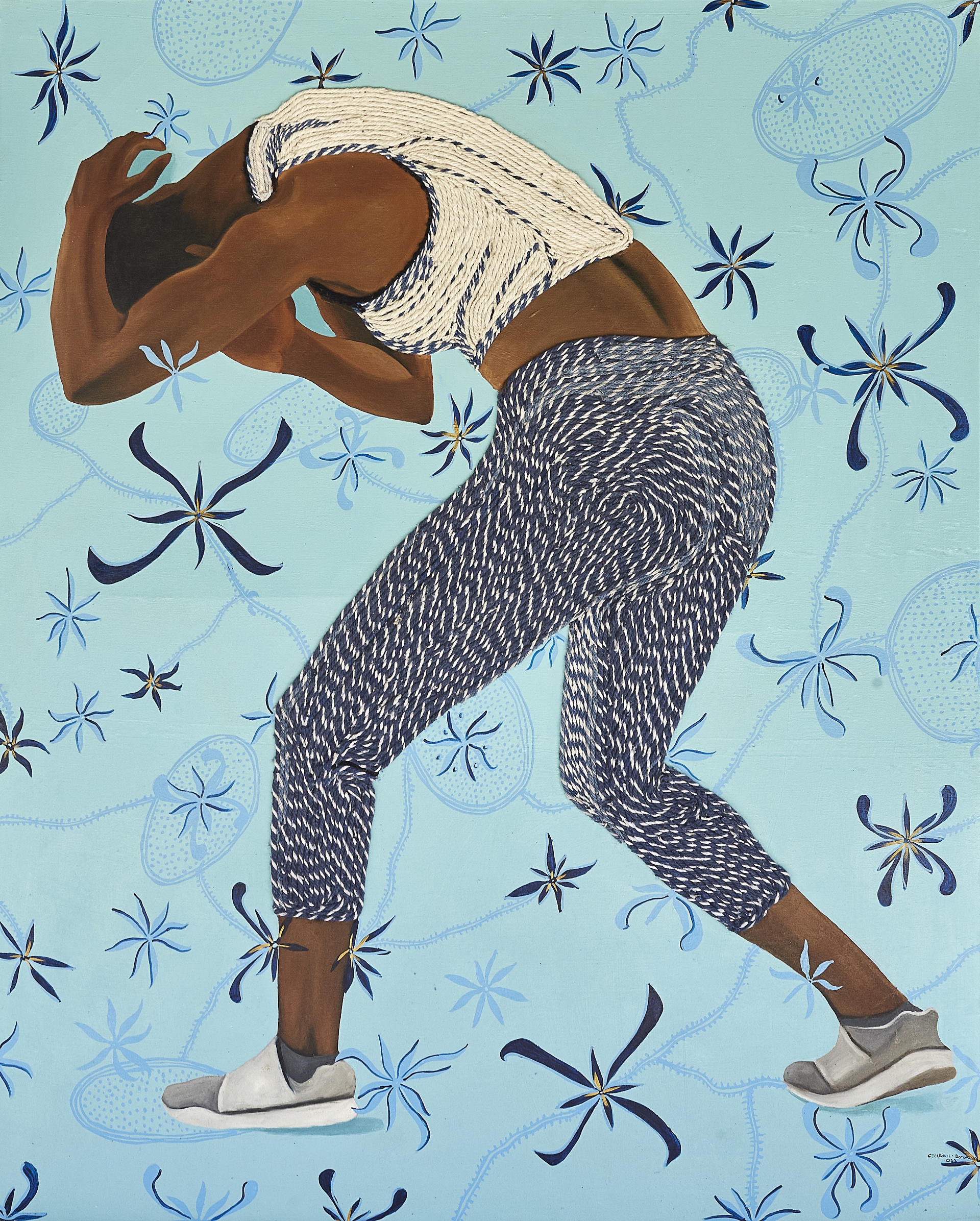11 June 2022 – 31 August 2022
Make We Dance
Cecilia Lamptey-Botchway
Cecilia Lamptey-Botchway's show 'Make We Dance' explores the idea of dance as a form of movement. In the show, various figures strike poses, swirling and dancing.
Cecilia Lamptey-Botchway's show 'Make We Dance' explores the idea of dance as a form of movement. In the show, various figures strike poses, swirling and dancing.
These are snapshots of a longer version of events. We are invited, in a sense, to speculate the before and after lives of the painted moments. What was there before the being of the painting?
The elements in these paintings bring together the artist's different artistic strands. Trained at the Yaba College of Technology School of Art, Design and Printing in Lagos, Nigeria, the flowery background gestures towards the abstraction of Lamptey Botchway's textile practice.
The cloth stamping and batik tradition motifs have previously appeared in the backgrounds of her earlier body of work. They were layered on the canvas as they would be on a fabric. Currently, they are freed from the constraints of the textile layout.
The motifs interact with the figures. In the best parts, the motifs float behind and in front of the figures, complicating the background-foreground dichotomy.
The figures themselves are adorned with mopping wool. Taking an anthropological onsite nonparticipant approach, Lamptey-Botchway observed her subjects in markets, churches, and dance classes, studying their movements and rendering them on canvases.
These are snapshots of a longer version of events. We are invited, in a sense, to speculate the before and after lives of the painted moments. What was there before the being of the painting?
The elements in these paintings bring together the artist's different artistic strands. Trained at the Yaba College of Technology School of Art, Design and Printing in Lagos, Nigeria, the flowery background gestures towards the abstraction of Lamptey Botchway's textile practice.
The cloth stamping and batik tradition motifs have previously appeared in the backgrounds of her earlier body of work. They were layered on the canvas as they would be on a fabric. Currently, they are freed from the constraints of the textile layout.
The motifs interact with the figures. In the best parts, the motifs float behind and in front of the figures, complicating the background-foreground dichotomy.
The figures themselves are adorned with mopping wool. Taking an anthropological onsite nonparticipant approach, Lamptey-Botchway observed her subjects in markets, churches, and dance classes, studying their movements and rendering them on canvases.
When the artist started using mopping wool, it was because she made a connection among the cleaning object, domesticity, and female-based chores. The wool appears in already made strands which are then carefully glued in the sketch spaces left unoccupied by the application of acrylic and oil.
To contemplate the show's preoccupation with dance might lead us to ask this question: what can dance do?
Ghanaian poet Kofi Anyidoho was once asked what he thought about when heused 'dance' in his poems. For context, his latest collection 'The Place We Call Home and Other Poems' is modeled after a 3-movement lyrical composition.
The opening poem 'Prelude' begins as:
'And The Drums/The Drums guide our feet/ In this backwards-forwards dance/this forwards-backwards dance'.
To the earlier question that the poet was asked, he answered that he thought about 'conversations' when he used ‘dance’. Lamptey Botchway was asked why she had now introduced men figures in her compositions. She responded that women cannot do it alone. It seems that the artist is using dance as a platform for conversations and partnerships. Whether they are alone or in company, the women figures have their eyes closed, drawing us into their performance.
The paintings flatten performances. But the show makes a reclamation where some of inspirers for the figures are involved in a live performance.
- Kwabena Agyare Yeboah
To contemplate the show's preoccupation with dance might lead us to ask this question: what can dance do?
Ghanaian poet Kofi Anyidoho was once asked what he thought about when heused 'dance' in his poems. For context, his latest collection 'The Place We Call Home and Other Poems' is modeled after a 3-movement lyrical composition.
The opening poem 'Prelude' begins as:
'And The Drums/The Drums guide our feet/ In this backwards-forwards dance/this forwards-backwards dance'.
To the earlier question that the poet was asked, he answered that he thought about 'conversations' when he used ‘dance’. Lamptey Botchway was asked why she had now introduced men figures in her compositions. She responded that women cannot do it alone. It seems that the artist is using dance as a platform for conversations and partnerships. Whether they are alone or in company, the women figures have their eyes closed, drawing us into their performance.
The paintings flatten performances. But the show makes a reclamation where some of inspirers for the figures are involved in a live performance.
- Kwabena Agyare Yeboah











